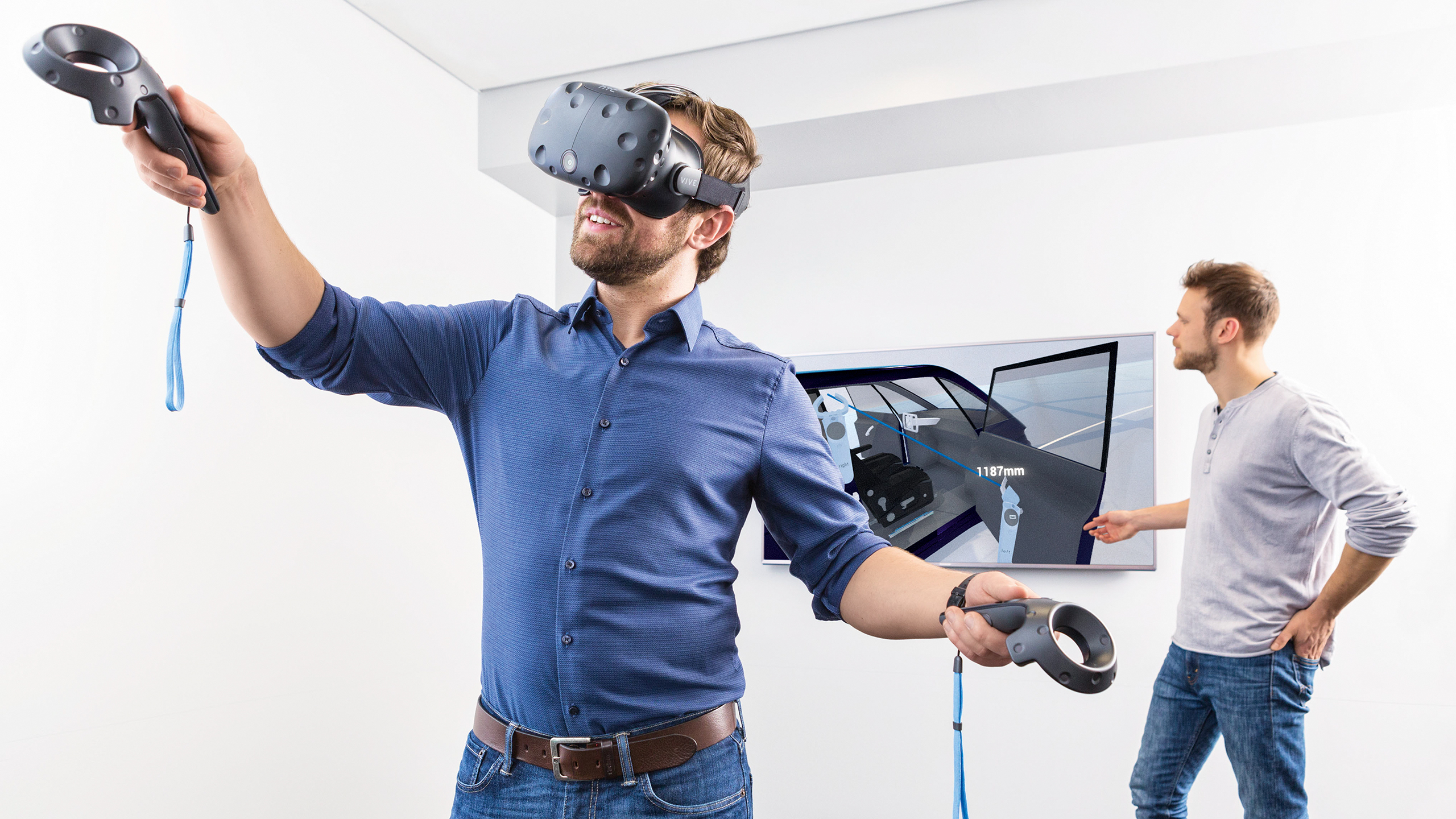Working in xReality
Worldwide collaboration, new forms of training and the “future workplace”: IAV focuses on virtual and augmented reality
Telephone and video conferences were yesterday because the future lies in xReality. This concept encompasses the two technologies of virtual reality (VR) and augmented reality (AR), and they have the potential to revolutionize worldwide collaboration and training activities. Soon, xReality will change your own workplace beyond recognition. IAV is using the new technology for the entire development process.
Whereas those taking part in a telephone or video conference experience their dialog partners as being far away, in an xReality meeting, they get together in a shared virtual space. Wearing VR glasses, they can work together on 3-D models, perceive all participants as avatars and speak to each other. “This means each participant sees where the others are, which detail they are looking at and the changes they want to make”, explains Christopher Wolf, Senior Vice President Business Development & Virtual Engineering as well as product owner of the xR team at IAV. “This way, engineers can work together on the latest vehicle models in real time and across different locations – always, of course, via a secure end-to-end connection.” Pilot projects involving up to four IAV sites have demonstrated that the new technology works without a problem in practice. This year, the “xReality Lab” is being opened at IAV Development Center in Gifhorn to provide a large area for working with other sites in a virtual world.
In the virtual world, developers can experience early concepts of new vehicles in a way that comes very close to reality. “For instance, you can walk around the model, open the door, get in and look out of the window”, says Anna Lena Wolf, scrum master in the IAV xR team. “Participants can measure distances, try out different colors or test lighting scenarios.” Nothing is lost of whatever is discussed during the xR meeting: film footage and photos as well as comments document all changes.

Bridge between CAD tools and visualization software
The new type of collaboration requires specially equipped xR rooms in which trackers and other sensors record participants’ movements and transpose them into the virtual room. It is also necessary to build a bridge between the data in the developers’ CAD tools and the visualization tools from the gaming world which generate the digital meeting points. “We have gathered a wealth of knowhow and can even visualize abstract variables with good results”, reports Lars Grotehenne, scrum master in IAV’s xR team. “For instance, the flow of energy in the vehicle can be depicted using colors which, depending on calibration, change in real time.” But there is still one major challenge: Whereas changes to the CAD data are transferred automatically to the visualization software, this is currently not the case in the opposite direction. It is likely to take two or three years before it is possible to feed adjustments to the xR model directly back to the CAD tools.
Training activities are a further application for xR. It has long been known that active learning is far more effective than passively taking up contents. xR technology opens up whole new options because in a virtual space, it is possible to create any environment and scenario, with all participants still being able to observe the facial expressions and responses of the others. As part of a compliance training, for
example, VR could move a member of staff to a distant country so as he could learn how to deal with gifts from a business partner.
Show presentations can be staged without any real-world prototypes. Thanks to virtual and augmented reality, visitors will be able to examine every detail of future products and even look inside them.
xR will make it possible for technicians in the workshop to familiarize themselves with new engines at an early stage or be guided through a repair process, in this case using AR: The displays of tablets and smartphones or the field of vision of smart glasses provide additional virtual information on individual components which will be displayed in the real world. This will benefit instruction and training, service and maintenance as well as fault and damage documentation.
Dipping into the “future workplace”
The xR specialists at IAV also have a vision for tomorrow’s workplace. Thanks to WiFi and VR glasses, the “future workplace” is to make it possible to dip into the virtual world of work from any place and at any time. Before their eyes and an attractive background, members of staff will then be able to see all the familiar tools that adorn today’s desktop, such as Office programs, notes, to-do lists or Skype. Skype conferences are to be possible as early as 2019, soon to be followed by gesture control und text input capabilities. The entire Microsoft world might be available in the “future workplace” in five to eight years. “In future, I will dip into the corporate world from whichever lovely location I happen to be, can remain in contact with my colleagues and pick up important information – no matter whether I’m in my garden or on the beach”, says Wolf, describing tomorrow’s world of work. “And when I’ve finished, I will resurface and leave my work behind me, knowing that it’s done.”
So, there are more than enough applications for xR. In future, IAV will be employing the technology throughout the product creation process, from presenting and approving different concepts, installation and removal studies and simulations right through to the assembly line as well as service and maintenance. Collaboration in the virtual room can begin.
